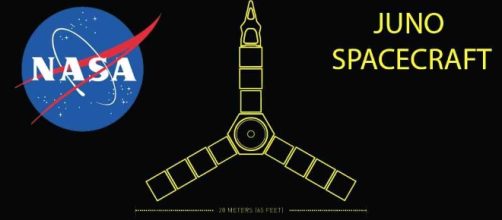Juno, on a long journey that took almost five years, was locked into Jupiter´s orbit and flung around the giant planet for the first time on July 4 to continue in a trajectory of 53.5 days around the planet. On July 31 at exactly 12:41 p.m. PDT (3:41 p.m. EDT), the spacecraft will be reaching its farthest distance-apojove, from Jupiter, at which point, the vehicle will begin to travel back towards Jupiter. At this stage, Juno is planned to begin the scientific research on the giant planet.
Juno´s 53.5 days orbit
On July 4, Juno was put into the first of two 53.5 days orbits around Jupiter, during which the spacecraft will be performing minor scientific studies of the giant planet, mostly taking close-up pictures with the JunoCam-one of its science instruments.
After the second 53.5 day orbit is complete, Juno will be put into a 14 day orbit around the gas giant planet. It´s during this stage of flybys that the spacecraft will start conducing cutting-edge science studies of Jupiter.
Juno´s first approach to Jupiter
Apojove, on July 31 marks half of one of the first 53.5 day orbits around Jupiter. On August 27, Juno will be completing one of these two long orbits around the gas giant planet, when it flings around one of the poles of the planet at a distance of 4,200 km (2,600 miles) above Jupiter´s gas clouds. During this pass, Juno´s instrument will be turned on to collect science data. This will only serve as a test of the instrumentation on board, before October 19, when the spacecraft will start collecting day to day science information.
Mission
With the aid of science instruments, Juno will study Jupiter´s deep interior to discover the real composition of its core. It will also research the planet´s gravitational and magnetic fields, its atmosphere and the information obtained during this mission will reveal Jupiter´s formation and evolution. This will also give scientists clues about how other gas giant planets in distant galaxies have evolved.
These studies conducted during juno´s science mission close flybys on Jupiter´s atmosphere will disclose new and innovative information not only about Jupiter and other similar planets, but about the solar system and our own planet-the earth, too.

